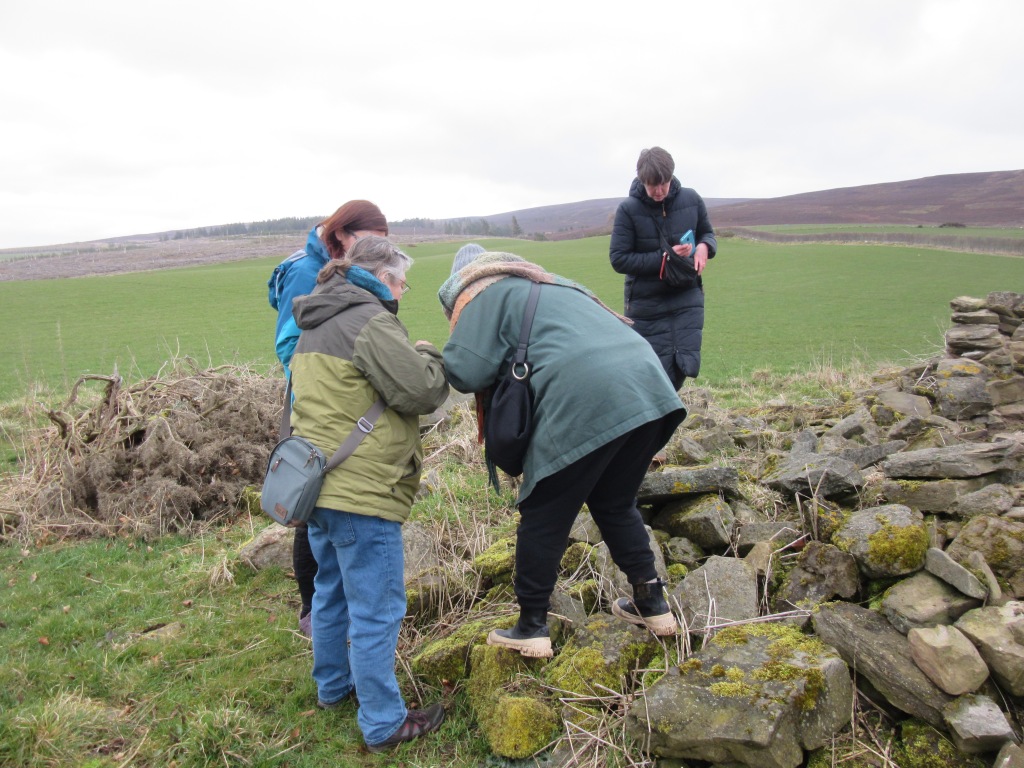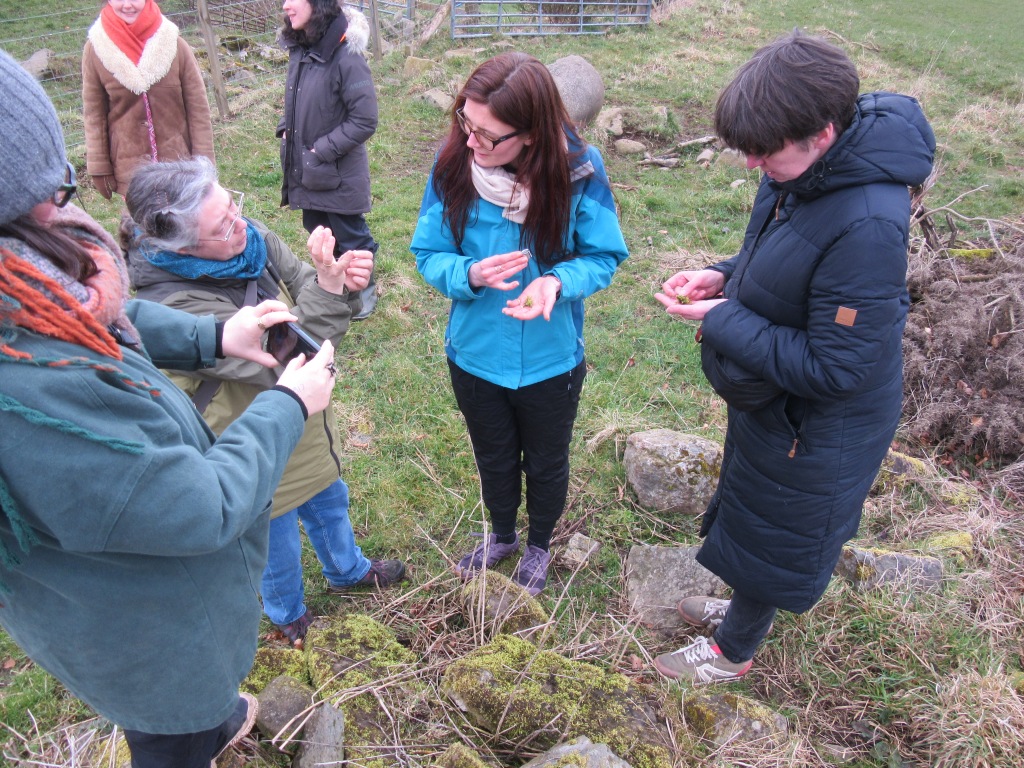
For just fifteen minutes Correen Cottage is the centre from which I experience the world. I had been looking at this spot on the map, looked up its name on Canmore (Historic Environment Scotland’s online database), and imagined what it would be like. Now, with artists and family in tow, I have reached it through a metal gate and a dropping-littered field with sheep. The people who once inhabited it knew this land intimately, taking gravel and stone to construct tracks and houses from the quarry just yards from the garden, and peat to heat homes from Lumsden Moss on the other side of the village. The topographic map also tells me the cottage has taken its name from the Correen Hills beyond. What draws me to abandoned farmsteads and townships like Correen Cottage is that, what now is a blank square on the map, and perhaps even perceived by the farmer as an obstruction to the productivity of their land, once was the centre of someone’s world, and a place where living hinged on an intimate understanding of the surrounding landscape.

In my practice as a field ecologist I have long thought about local ecological knowledge. For the people who inhabited farmsteads and townships, the extensive personal observation of, and interaction with, local ecosystems, was essential to produce and gather food, fodder and fuel. With their abandonment, this knowledge and experience gradually went out of practice, and now even the memory of those practices among the local community and its diaspora is becoming lost.
When recording lichens, liverworts and mosses I often seek out abandoned farmsteads and townships like Correen Cottage. In the Grampians, unconsolidated granite walls may have lush coverings of the bluish foliose lichen Parmelia saxatilis and extensive carpets of the velvety moss Hypnum cupressiforme. In exposed situations there will also be plenty of mosses with hairpoints like the woolly Racomitrium lanuginosum. So here, on my visit to Correen Cottage I am welcomed by the bright yellow lichen Xanthoria parietina and cushions of the hairpoint mosses Grimmia pulvinata and Tortula muralis. In naming these lichens I read stories about acidic rock, traces of mortar, drying winds and scorching sun, perching birds and ammonia from livestock.

The hand lens is an important tool for looking at lichens, liverworts and mosses. After gauging the position of the farmstead or township in the wider landscape and the built structures, trees and other features it comprises, I hold this lens close to my eye and bring my head forward until the lichen or moss is in sharp focus. A species like Grimmia pulvinata, looking but a hoary cushion with the naked eye, will suddenly reveal leaves that extend in silvery hairpoints and plenty of green or reddish brown spore-bearing capsules tucked between the leaves. What’s more, this close-up view allows me to appreciate how this species is able to grow on top and on the side of rocks rather than in the more sheltered and humid crevices between them as its hairpoints create an almost imperceptible layer of still air around the perfectly rounded cushions, in turn helping to retain moisture. To me, the hand lens expands, sharpens and clarifies. And it is the act of using a hand lens that kindles my emotional connection with the farmstead or township. What’s more, my understanding of the ecological requirements of lichens, liverworts and mosses, and the way they have adapted to live in challenging environments, renders an appreciation of the ecological conditions in that site. Yet, this is a glimpse and no more. My ecological practice at the farmstead or township is time-bound rather than ongoing, and I am not dependent on its environment for food, fodder and fuel. Looking at lichens, liverworts and mosses deepens my experience and appreciation of this blank square on the map, and the spaces framed by the four walls become filled with experiences of place. For just the duration of my visit, and emphasised by sharing my observations with artists and family, Correen Cottage was the centre from which I experienced the world.
This text was written as part of a research network run by the University of Aberdeen and University of the Highlands and Islands called ‘Creative Landscape Futures: Making Decisions with the Arts and Humanities’. It was funded by the Arts and Humanities Research Council.
Copyright text Petra Vergunst, copyright photos Jo Vergunst